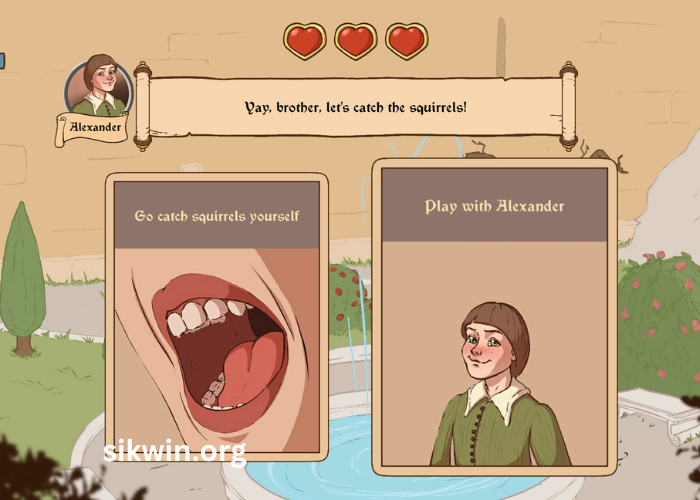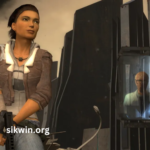Set against the backdrop of the Middle Ages,Choice of Life: Middle Ages 2 invites players to engage in a rich narrative where every decision can lead to triumph or disaster. This interactive game merges storytelling with elements of strategy and role-playing, allowing players to craft their destinies in a world filled with intrigue, adventure, and historical challenges. As players navigate through the various scenarios presented in the game, they will encounter a myriad of characters and situations that reflect the complexities of life during this tumultuous era.
The gameplay ofChoice of Life: Middle Ages 2 encourages thoughtful decision-making as players must consider the consequences of their actions. Each choice shapes not only the character’s journey but also the overall fate of the world around them. This interactive format allows players to explore multiple outcomes, making each playthrough a unique experience. The detailed scenarios often present moral dilemmas, forcing players to weigh their values against their goals. This aspect of the game deepens the player’s engagement, as they are not merely passive observers but active participants in the unfolding story.
Moreover,Choice of Life: Middle Ages 2 captures the essence of medieval life, immersing players in a richly developed world. From the intricacies of social hierarchy to the challenges of survival, the game offers a vivid portrayal of the time period. Players will find themselves embroiled in political machinations, battles for power, and quests for personal honor, all while navigating the everyday struggles of medieval existence. This blend of historical context and interactive gameplay creates a compelling narrative that resonates with fans of storytelling and strategy alike.
What Are the Key Features of Choice of Life: Middle Ages 2?
Choice of Life: Middle Ages 2 is distinguished by several key features that enhance its gameplay and narrative depth. One of the standout elements is the branching storyline that results from the player’s choices. Unlike linear games where the outcome is predetermined, this game allows for multiple paths and endings. Players can explore various storylines based on the decisions they make, encouraging them to replay the game and experience different outcomes. This feature not only increases the game’s longevity but also fosters a deeper connection to the narrative, as players become invested in the consequences of their choices.
Another significant aspect ofChoice of Life: Middle Ages 2 is its character development system. Players have the opportunity to create and customize their characters, selecting traits and skills that influence their interactions within the game. This personalization enhances the immersion, as players can shape their characters to align with their desired playstyle. Whether they choose to be a noble knight, a cunning merchant, or a resourceful peasant, the decisions made during character creation will have lasting impacts on the gameplay experience.
Additionally, the game features rich, well-crafted dialogue that enhances storytelling. The writing inChoice of Life: Middle Ages 2 is engaging and often humorous, providing players with entertaining interactions that breathe life into the characters. The dialogue choices also allow for varied interactions, meaning players can navigate social dynamics in multiple ways. This depth in character interaction elevates the gaming experience, making players feel as though they are truly part of a living, breathing medieval world.
How Does Decision-Making Impact Gameplay in Choice of Life: Middle Ages 2?
InChoice of Life: Middle Ages 2, decision-making is at the heart of the gameplay experience. Each choice a player makes can lead to significant consequences that shape the narrative and character progression. The game is designed to challenge players to think critically about their decisions, as actions taken in one scenario may have unforeseen repercussions in another. This mechanic keeps players on their toes, creating a sense of tension and excitement as they navigate through the storyline.
The impact of decision-making is further highlighted by the moral dilemmas presented throughout the game. Players are often faced with choices that test their ethics and values, forcing them to weigh personal gain against the welfare of others. For example, a player might have to decide whether to betray a friend for power or uphold their loyalty despite potential losses. These moments not only add depth to the gameplay but also encourage players to reflect on their values and the implications of their actions.
Moreover, the consequences of decisions inChoice of Life: Middle Ages 2 can manifest in various forms. Players may find themselves gaining or losing allies, altering their social standing, or even facing dire challenges based on their past choices. This interconnected web of decision-making creates a dynamic gameplay experience that rewards thoughtful engagement. As players progress, they will discover that their choices can lead to unexpected alliances, conflicts, or opportunities, adding layers of complexity to the narrative.
What Types of Characters Can Players Encounter in Choice of Life: Middle Ages 2?
The richness ofChoice of Life: Middle Ages 2 is enhanced by the diverse array of characters players encounter throughout their journey. Each character is meticulously crafted with unique backgrounds, motivations, and relationships. This variety enriches the storytelling, as players interact with individuals who embody different aspects of medieval society, from nobility to common folk.
One notable aspect of character interaction is the complexity of their personalities. Characters inChoice of Life: Middle Ages 2 are not merely one-dimensional archetypes; they possess intricate motivations that can shift based on the player’s actions. For instance, a noble character might initially appear haughty but could reveal vulnerabilities that resonate with the player’s choices. This depth invites players to engage more meaningfully with the narrative, as they navigate alliances and rivalries shaped by their interactions.
Players also have the opportunity to influence the relationships they build with these characters. The game allows for the cultivation of friendships, rivalries, or even romances, adding an emotional layer to the decision-making process. By choosing how to respond to different characters, players can forge bonds that significantly impact the storyline. This relational dynamic adds a personal touch to the gameplay, making every encounter feel significant and tailored to the player’s unique choices.
How Does Choice of Life: Middle Ages 2 Integrate Historical Elements?
Choice of Life: Middle Ages 2 expertly weaves historical elements into its gameplay, providing players with an authentic feel of the medieval period. The game’s setting is rich with cultural references, social hierarchies, and historical events that ground the narrative in reality. From feudal systems to the importance of trade and craftsmanship, players are immersed in a world that reflects the complexities of medieval life.
The incorporation of historical events is another significant aspect of the game. Players may find themselves entangled in conflicts that mirror actual historical battles or political intrigues of the time. These elements serve to educate players about the historical context while simultaneously enhancing the narrative depth. By engaging with these historical facets, players can appreciate the nuances of the era and how they influence the choices they must make.
Moreover,Choice of Life: Middle Ages 2 emphasizes the daily life and struggles of individuals during this time. Players experience the challenges of survival, the importance of community, and the intricacies of social interactions that characterize medieval life. This attention to detail fosters a sense of immersion, allowing players to connect with the historical context on a personal level. By navigating the realities of medieval existence, players gain a deeper understanding of the era’s societal dynamics and the choices faced by those who lived during it.
What Strategies Can Players Use to Succeed in Choice of Life: Middle Ages 2?
Success inChoice of Life: Middle Ages 2 relies on a combination of strategic thinking and adaptive decision-making. Players are encouraged to consider their choices carefully, as each decision can lead to different outcomes that impact their character’s journey. One effective strategy is to think ahead and anticipate potential consequences before making a choice. By weighing the pros and cons, players can navigate the storyline more effectively and avoid pitfalls that may hinder their progress.
Another strategy involves building relationships with other characters. Developing strong alliances can provide players with valuable support and resources, helping them to navigate challenges more effectively. Engaging in dialogue, offering assistance, and making choices that resonate with others can foster goodwill and create opportunities for collaboration. In a game where social dynamics play a crucial role, nurturing these relationships can lead to favorable outcomes and enrich the overall experience.
Additionally, players should embrace the exploration aspect ofChoice of Life: Middle Ages 2. The game encourages curiosity, with various paths and hidden scenarios waiting to be discovered. By exploring different choices and experimenting with various approaches, players can unlock new content and enrich their gameplay experience. This willingness to experiment can lead to unexpected and rewarding outcomes, enhancing the overall enjoyment of the game.
How Does Choice of Life: Middle Ages 2 Encourage Replayability?
One of the standout features ofChoice of Life: Middle Ages 2 is its high replayability, which stems from its branching narratives and decision-making mechanics. Players can experience the game multiple times, exploring different choices and their consequences with each playthrough. The myriad of paths available allows for unique storylines, encouraging players to return to the game and discover new outcomes.
The character development system further enhances replayability. With the ability to customize characters and select different traits, players can approach the game from various perspectives. This aspect invites experimentation, as players can try out different strategies and decision-making styles. The combination of character customization and branching storylines ensures that no two playthroughs are the same, making the game feel fresh and engaging with each new attempt.
Moreover, the rich world-building and character interactions contribute to the desire to explore every facet ofChoice of Life: Middle Ages 2. Players may find themselves drawn to uncovering every character’s story or unlocking all possible endings, providing a sense of completion that motivates them to replay the game. This depth of content, coupled with the engaging storytelling, fosters a sense of discovery that keeps players coming back for more.
Conclusion
Choice of Life: Middle Ages 2 offers an engaging and immersive experience that captivates players through its rich storytelling, strategic decision-making, and historical authenticity. With its branching narratives, diverse characters, and the importance of relationships, the game invites players to craft their unique journeys in a meticulously crafted medieval world. As they navigate moral dilemmas and encounter the complexities of life during the Middle Ages, players are encouraged to reflect on their choices and the impact they have on the unfolding story. This interactive experience not only entertains but also educates, makingChoice of Life: Middle Ages 2 a remarkable addition to the realm of narrative-driven games. Whether players seek adventure, strategy, or a deeper understanding of medieval life, this game delivers an unforgettable journey through the ages.





Here offers a large assortment of stylish timepieces for every room.
You can explore contemporary and classic styles to fit your apartment.
Each piece is chosen for its aesthetic value and reliable performance.
Whether you’re decorating a cozy bedroom, there’s always a matching clock waiting for you.
best large oval distressed wall clocks
The collection is regularly updated with new arrivals.
We care about a smooth experience, so your order is always in good care.
Start your journey to better decor with just a few clicks.